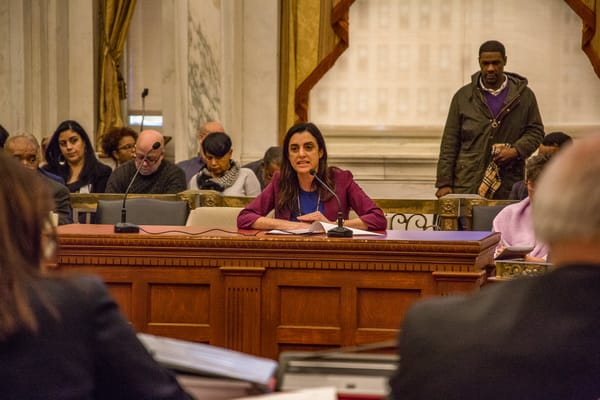Liberal Aspiration and Moral Accounting in Hamilton and Charlie Parker's Yardbird

Liberalism did not originate in the US, but we have certainly laid claim to one of the boldest attempts at upholding and exemplifying its tenets, even if only in aspiration. While “all men are created equal” in 1776 was a very radical statement of political theory, the US has always fallen short of realizing that principle. Despite these failings, the ethos surrounding the uniqueness of American experience with liberalism is very real. Perhaps nowhere is this ethos more present than in the blockbuster musical, Hamilton. Lin Manuel-Miranda’s smash hit is a high-energy, full-throated defense of liberal multiculturalism and a testament to the aspirational ethos of America’s relationship with liberalism.
For anyone unfamiliar with the musical, Hamilton is an adaptation of the life of Alexander Hamilton, inspired by Ron Chernow’s biography. While not the first musical adaptation of the revolutionary period of American history, it is certainly the first to reimagine it in the context and language of American hip-hop music. Miranda reimagines Hamilton as an embodiment of the classic rags-to-riches immigrant story that is so prevalent in American lore. Born a bastard child, and made an orphan who grew up in poverty in the Virgin Islands, he made his way to New York and eventually became a leading figure in the American Revolution and the early republic. He is portrayed as a tireless, fire-in-his-gut, talented revolutionary full of fervor.
Building on the themes of multiculturalism, Hamilton was also unique in that the cast—characters who are historically white men and women—was entirely composed of black and brown actors, with the exception of the cameo by King George. Miranda says “[t]his is a story about America then, told by America now.” Its radical inclusivity when considering the story of the nation’s founding is representative of the aspirations of the American liberal spirit, if not the historic reality of the moment it portrays. It is particularly prescient now as America is deliberately backtracking on many of its liberal promises.
While I have no strong opinion on the merits of Hamilton strictly as a musical, I can recognize and appreciate the cultural significance of its larger enterprise. But there is a danger of making the historical Hamilton into something that he wasn’t. As my colleague Phil Magness has pointed out, Hamilton the man was actually much more similar to President Trump and the populist movements of today than any devotee of the musical would probably like to admit:
Over the course of almost 30 years in political life, Hamilton developed a system of sometimes nuanced but assertive economic nationalism. He believed that trade restrictions were crucial to the development of the fledgling nation’s “infant” industrial base, as well as a guardian against practices of European nations that he deemed unfair or harmful to American interests.
Towards the end of career, Hamilton, the exemplar of the immigrant story, shifted his views on immigration. Hamilton runs the risk of obscuring the real Hamilton and failing to hold him to full moral account, in much the same way that the hagiography surrounding figures like Jefferson has throughout America’s history.
As I said earlier, though, the story of America’s aspirational liberalism is not a rare one, particularly in the artistic sphere, and many find different ways of telling the same story. But other narratives and works of art do attempt to provide that reckoning story, laying bare the times when liberal ideals were not upheld. A very good (in my mind), recent example of one that happens to share many of the same attributes of Hamilton is the chamber opera, Charlie Parker’s Yardbird.
Yardbird is about the life and work of legendary jazz saxophonist Charlie Parker. Parker was an innovative musician and one of the minds behind the development of bebop, a form of jazz that features fast tempos, complex chord changes, and requires a sincere ability to improvise. Bebop was a shift away from big-band swing. Like Hamilton, Yardbird features at the center of the story a young, extremely talented minority voice, full of revolutionary fervor. Yardbird, while being a chamber opera and performed by classical singers, heavily features jazz as the musical vernacular in which the story is delivered. At several points throughout the show, the Parker character sings improvisational licks and coloratura as if he were actually playing a saxophone.
Parker, though, was never able to achieve elite status, and he was came to represent a threat to public morality, both because of the nature of his music and his personal habits. Heroin was widely used by jazz musicians, and Parker was no exception. Jazz in general was regarded as sinful, unconventional music associated with sexual licentiousness, and Parker became synonymous with this pejorative image. As Martin Torgoff writes in his book, Bop Apocalypse: Jazz, Race, the Beats, and Drugs:
[H]e quickly came to symbolize everything … that the vice cops hated: drug use and integration. At the end of 1945 the local authorities cracked down hard on the street, shuttering clubs under the same pretext used to close down Storyville in New Orleans back in 1917: the corruption of American servicemen by sex, drugs, and jazz.
Embodying the rebellious spirit of his music in Yardbird, Parker sings “I’m a jazzman. I’m blowing all my pain out through this horn … I ain’t gonna sit in the back of the bus no more, ain’t going around the back no more.” Parker’s story is not a triumphant one about the making of a nation; it’s a gritty realist tale about a nation’s undoing of a visionary genius and a reminder of the continual struggle between our political theory and our political practice.
The point is not to say that Yardbird is more important than Hamilton because it serves as a reminder of the unfulfilled promises of liberalism. The point is that these two works of art can be seen as markers for a path that liberalism could follow.
Featured image is Scene at the Signing of the Constitution of the United States, by Howard Chandler Christy




